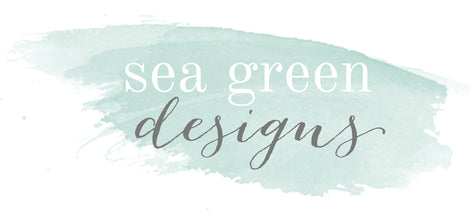How to create a Traditional Coastal Look for Your Home
Today, I’m beginning a series to help you determine your coastal interior design style. I know we’re all spending almost all of our time at home these days, and most of us are thinking about all the ways we want to change our home. When I am hired to work with a client to design their home, it’s really important for me to learn what her style is and what she wants her home to feel like when she walks through the door. Since my specialty is creating coastal retreats for busy professionals to enjoy with their family and friends, most of my clients want to walk through the door of their home and be able to feel a sense of calm and comfort which is inherent in all coastal styles. However, I have to dig deeper to really understand their aesthetic.
In today's post, I’m going to dive deeper into what elements create a traditional coastal style. When a client is looking for a traditional coastal interior design, they like five key elements.
HISTORY
Historical design elements generally related to the 18th and 19th These elements usually have a European influence, but can also be from the Far East. Think Louis the XIV bergère chairs or chinoiserie. I incorporate these in different ways. Sometimes we’ll take a piece with ornate details and finish it in coastal color like a deep blue or even a beige. Other times, we’ll use an antique in a dark walnut finish against a white backdrop and add coastal accents. SYMMETRY
SYMMETRY
 WARMTH
WARMTH
 DETAILED ARCHITECTURE
DETAILED ARCHITECTURE
 STRIPES & FLORALS
STRIPES & FLORALS
 Do you think your coastal style is traditional? Do you find yourself drawn to any of these elements? If these are these details speak to you, then you have your answer. If not, stay tuned for the next blog post where I dive into transitional coastal style.
Do you think your coastal style is traditional? Do you find yourself drawn to any of these elements? If these are these details speak to you, then you have your answer. If not, stay tuned for the next blog post where I dive into transitional coastal style.
 SYMMETRY
SYMMETRY
- Calm and symmetrical is also a key to traditional coastal design. In this style, finishes will match, and rooms will be balanced. A traditional coastal living room may have a pair of chairs evenly balanced with a pair of chairs centered around a fireplace evenly centered at the end of the room.
 WARMTH
WARMTH
- In “traditional” traditional design, warm tones are common, but in traditional coastal design, there is typically a contrast of white, bright, or light color with warm wood. I often find that clients that want a traditional coastal design want dark wood floors and white kitchen cabinets. I then will incorporate a mixture of painted pieces with some detailed carving, some pieces in a stained finish in a tone that works with the floors such as a dining table with a cabriole leg in a walnut satin, and textured fabrics in coastal blues, greys, greens.
 DETAILED ARCHITECTURE
DETAILED ARCHITECTURE
- Detailed architectural elements are another key component in traditional coastal design. These architectural elements include crown moldings, paneled walls, and sometimes columns. In the traditional coastal style, these elements will be painted, usually white, sometimes in a blue or gray. I also love it when we can whitewash moldings like oak to bring in the warm texture of the wood, but I keep it light.
 STRIPES & FLORALS
STRIPES & FLORALS
- In keeping with the historical design elements, fabrics are usually embroidered or in patterns like stripes or florals. I love to mix the scale of patterns when I’m designing a traditional coastal home. I’ll typically use a textured solid on sofa with throw pillows on size that have floral pattern, and maybe a stripe on another size pillow, tying them together with the color, and using an embroidered fabric for drapery panels.
 Do you think your coastal style is traditional? Do you find yourself drawn to any of these elements? If these are these details speak to you, then you have your answer. If not, stay tuned for the next blog post where I dive into transitional coastal style.
Do you think your coastal style is traditional? Do you find yourself drawn to any of these elements? If these are these details speak to you, then you have your answer. If not, stay tuned for the next blog post where I dive into transitional coastal style.








